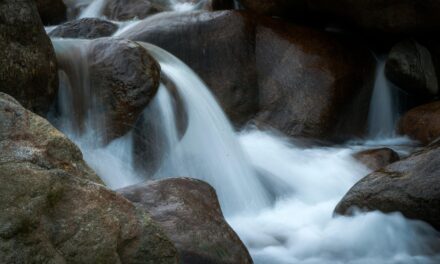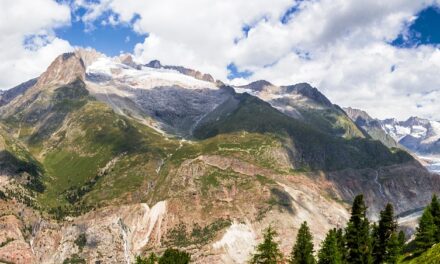Conclusion and Climate Adaptation Strategies explained
Conclusion, Climate Adaptation Strategies, and more
The Great Salt Lake: A Shrinking Treasure – A Call to Action
The Great Salt Lake, a vital part of Utah’s ecosystem, is facing a serious water shortage. Climate change and excessive human water use are the primary culprits behind its shrinking size. This is a crisis that affects all of us.
Here’s why the shrinking lake is a major problem:
- Wildlife Habitat Loss: Many bird species, fish, and other animals rely on the Great Salt Lake for food, nesting grounds, and a safe habitat. As the lake shrinks, their survival is threatened.
- Air Quality Issues: The lake’s shrinking surface exposes dry lakebed, which can be easily blown by wind, creating dust storms that harm air quality and human health.
- Economic Impacts: The lake supports a significant tourism industry, and the shrinking lake threatens these jobs and revenue.
What can we do?
- Conserve Water: Implement water-saving measures in our homes and communities. This includes using smart irrigation systems, fixing leaks, and practicing water-wise gardening techniques.
- Support Water Conservation Programs: Advocate for policies and initiatives that promote responsible water use and ensure the lake receives adequate water flows.
- Get Involved with Conservation Efforts: Volunteer with organizations working to restore the Great Salt Lake, like the Active Climate Rescue Initiative, which is dedicated to finding solutions to the water crisis.
The Great Salt Lake is a valuable resource that deserves our protection. By understanding the challenges it faces and taking action, we can help ensure its future and preserve its vital role in our environment.
The Great Salt Lake: A Shrinking Treasure
TL;DR: The Great Salt Lake is facing a serious water shortage, mainly due to climate change and too much water being used by humans. This is causing big problems for the lake and the area around it. We need to find ways to use less water and conserve what we have, like using smart irrigation systems and helping the lake get more water back.
A Watery Journey
The Great Salt Lake is a giant, salty lake in Utah that plays a vital role in the environment. The water cycle keeps the lake alive. It starts with rain and snow falling in the mountains. The water flows down into rivers and streams, eventually reaching the lake. But this cycle is changing.
The Shrinking Lake
The Great Salt Lake is shrinking because it’s not getting enough water. Here’s why:
- Climate Change: The climate is getting hotter and drier, so less rain and snow are falling in the mountains.
- Water Use: More people are living in the area, and they need water for their homes, farms, and businesses. This means less water is reaching the lake.
The Impacts of Water Shortages
A shrinking Great Salt Lake has big consequences:
- Wildlife: Many birds, fish, and other animals rely on the lake for food and a place to live. As the lake gets smaller, their habitats are disappearing.
- Air Quality: The Great Salt Lake helps clean the air by keeping dust down. When the lake shrinks, more dust blows around, making it harder for people to breathe.
- Economy: The lake is a valuable resource for tourism and recreation. Fewer visitors come when the lake is shrinking, which hurts businesses.
Finding Solutions
There are many ways to help the Great Salt Lake:
- Conservation: We can all save water by using less at home, in our gardens, and at work.
- Smart Irrigation: Farmers can use new technologies to water crops more efficiently, using less water overall.
- Policy Changes: Governments can make rules that encourage water conservation and protect the Great Salt Lake.
Climate Adaptation Strategies
The Active Climate Rescue Initiative is actively working to find solutions to the Great Salt Lake water crisis. They are exploring ways to replenish the lake and reduce water usage in the region.
Summary
The Great Salt Lake is facing a water shortage due to climate change and increased water use. This is impacting wildlife, air quality, and the economy. To protect the lake, we need to conserve water, use smart irrigation methods, and support policy changes that promote water conservation. Organizations like the Active Climate Rescue Initiative are working hard to find solutions to this important challenge. By taking action, we can help ensure that the Great Salt Lake remains a vibrant and essential part of our environment for generations to come.
More on Conclusion…
- ## SEO Keywords: Conclusion & Climate Adaptation Strategies
- General
- Climate adaptation strategies
- Climate change adaptation
- Adaptation to climate change
- Climate resilience
- Climate change mitigation
- Sustainability strategies
- Climate action plan
- Climate risk assessment
- Climate vulnerability assessment
- Climate change impacts
- Climate change solutions
- Climate change adaptation measures
- Climate change adaptation policies
- Climate change adaptation projects
- Specific Strategies
- Water management
- Drought management
- Flood mitigation
- Coastal protection
- Sea level rise adaptation
- Heatwave adaptation
- Extreme weather events adaptation
- Infrastructure adaptation
- Agriculture adaptation
- Forestry adaptation
- Biodiversity conservation
- Public health adaptation
- Disaster risk reduction
- Early warning systems
- Climate change education
- Climate change communication
- By Sector
- Climate adaptation in cities
- Climate adaptation in agriculture
- Climate adaptation in infrastructure
- Climate adaptation in water resources
- Climate adaptation in health
- Climate adaptation in tourism
- Climate adaptation in finance
- Climate adaptation in insurance
- By Region
- Climate adaptation in Africa
- Climate adaptation in Asia
- Climate adaptation in Europe
- Climate adaptation in North America
- Climate adaptation in South America
- Climate adaptation in Australia
- Climate adaptation in the Arctic
- By Topic
- Climate adaptation costs
- Climate adaptation benefits
- Climate adaptation financing
- Climate adaptation governance
- Climate adaptation technology
- Climate adaptation research
- Climate adaptation monitoring
- Climate adaptation evaluation
- Conclusion Keywords
- Conclusion of climate adaptation strategies
- Climate adaptation strategies summary
- Climate adaptation strategies findings
- Climate adaptation strategies recommendations
- Climate adaptation strategies future directions
- Conclusion of climate change adaptation
- Climate change adaptation conclusion
- Climate adaptation conclusion
- Adaptation conclusion
- Conclusion on climate adaptation
- Conclusion on climate resilience
- Climate change conclusion
- Related Keywords
- Climate change mitigation and adaptation
- Climate change impacts and adaptation
- Climate change adaptation and resilience
- Sustainable development and climate adaptation
- Climate change adaptation and policy
- Climate change adaptation and governance
- Climate change adaptation and finance
- Climate change adaptation and technology
- Long-Tail Keywords
- Best practices for climate adaptation strategies
- Climate adaptation strategies for small businesses
- Climate adaptation strategies for developing countries
- The role of technology in climate adaptation
- Climate adaptation strategies for water management
- Climate adaptation strategies for coastal communities
- Climate adaptation strategies for agriculture in Africa
- The impact of climate change on infrastructure and adaptation strategies
- This list provides a comprehensive starting point for identifying relevant SEO keywords related to “Conclusion” and “Climate Adaptation Strategies.” It is important to research and tailor the keywords to your specific content and target audience for optimal results.











